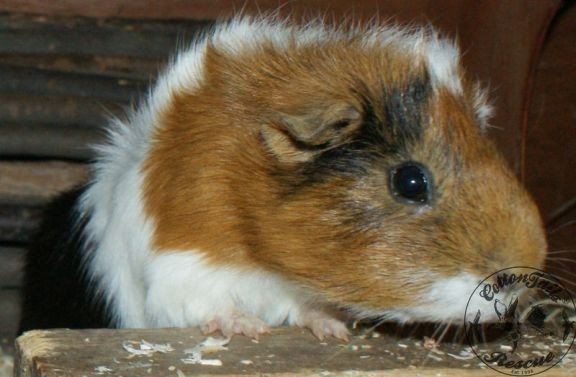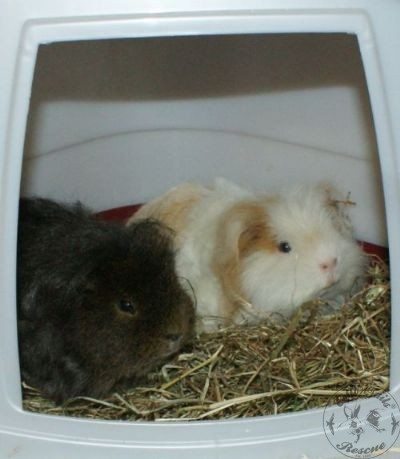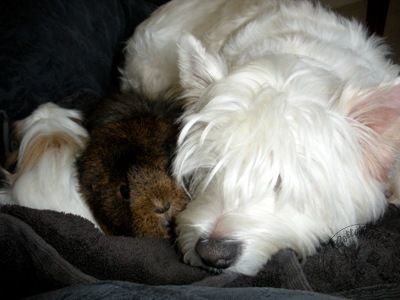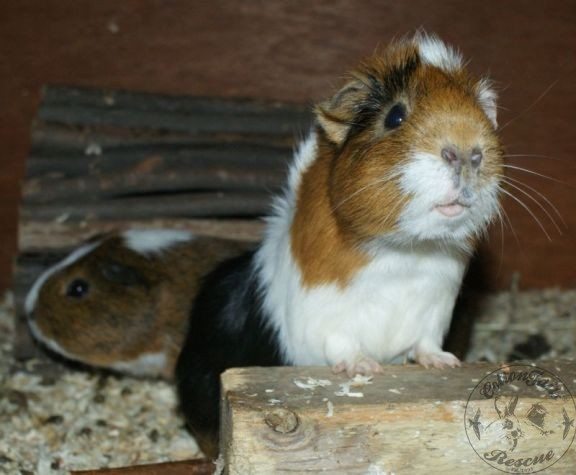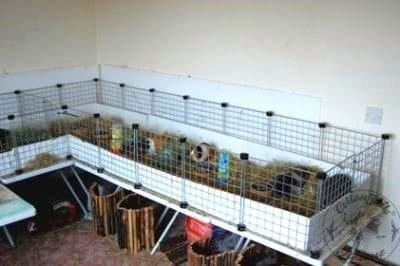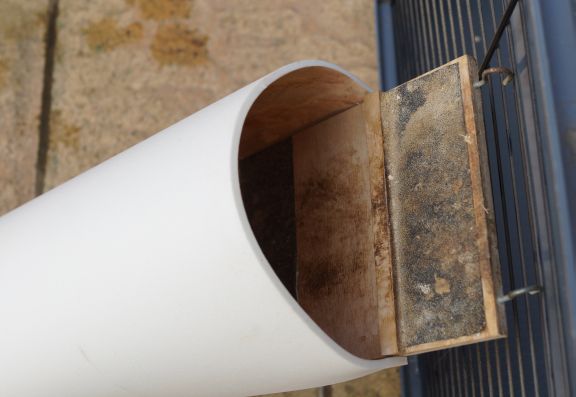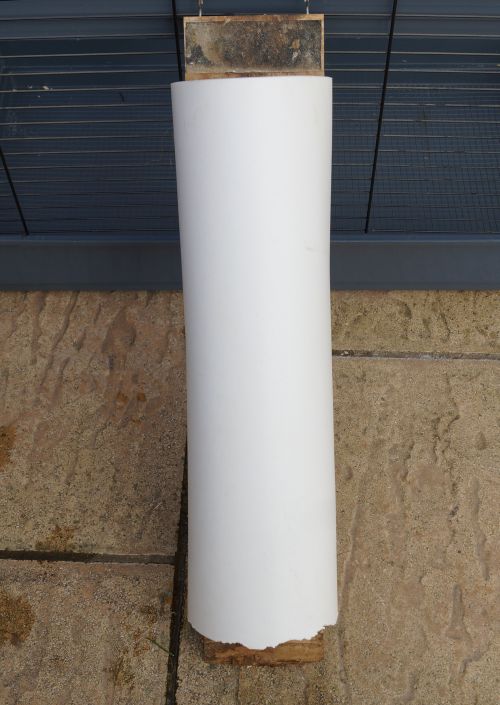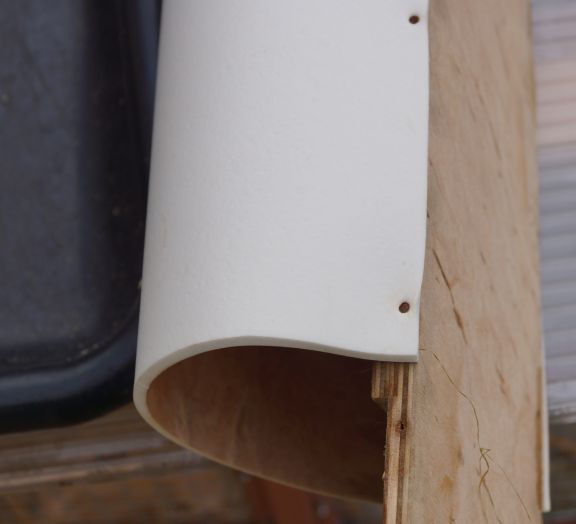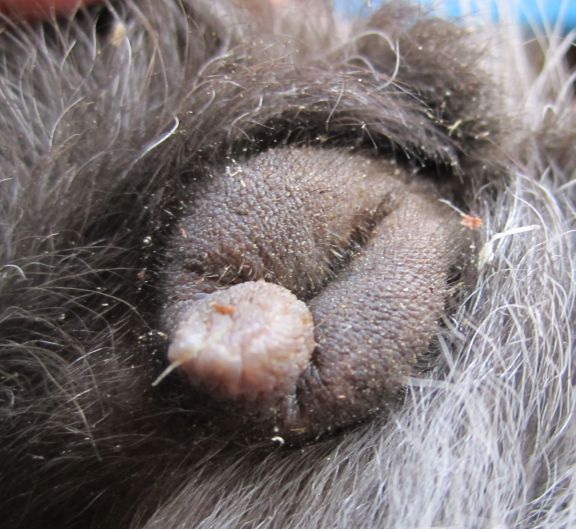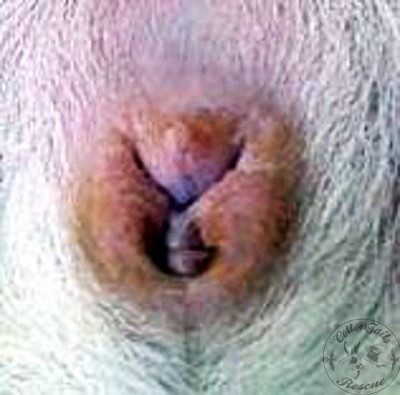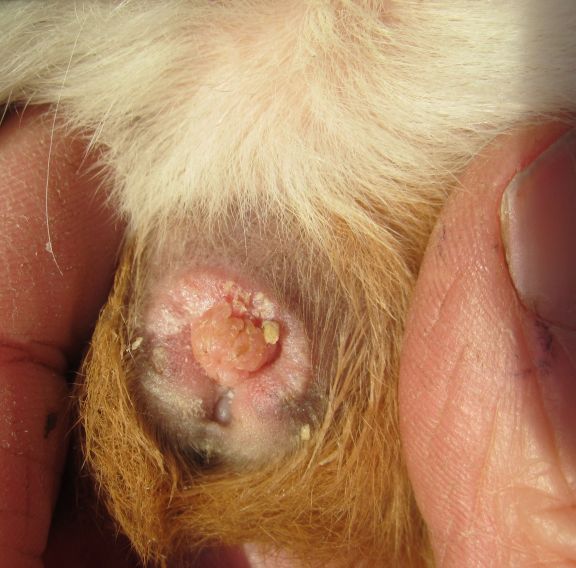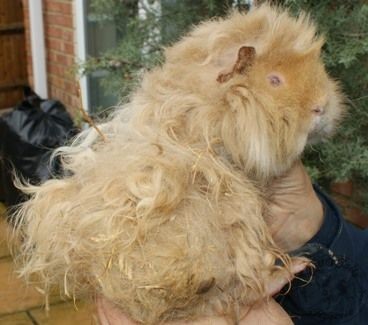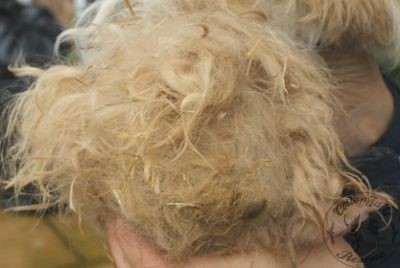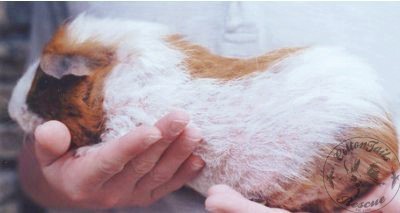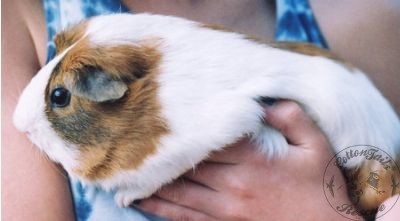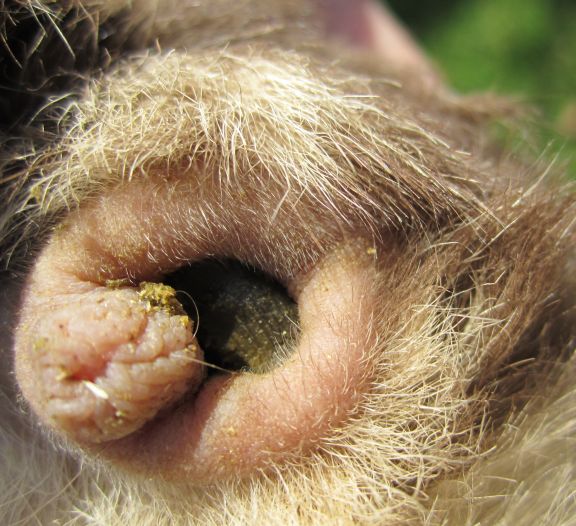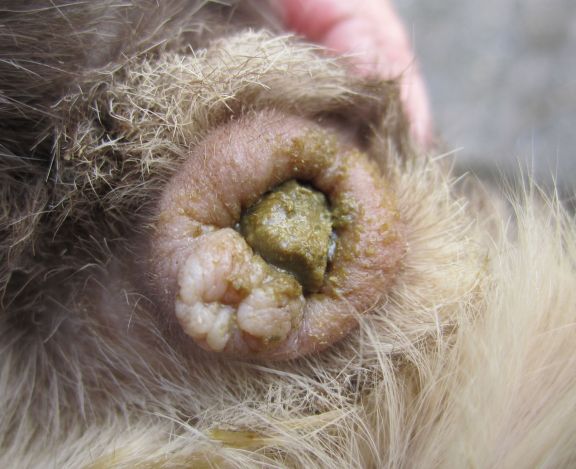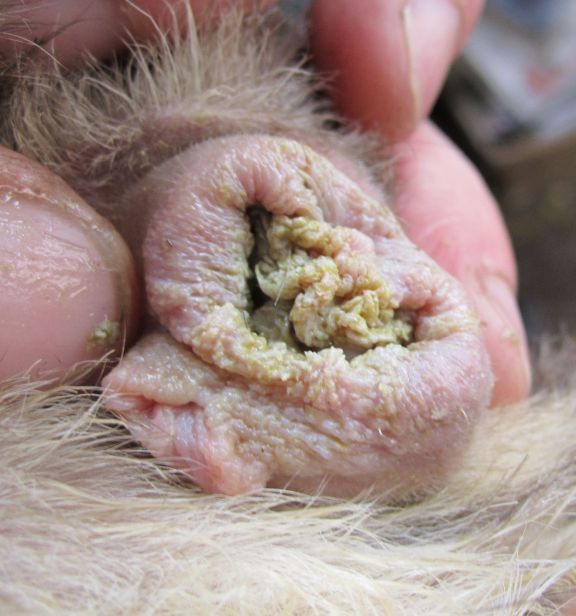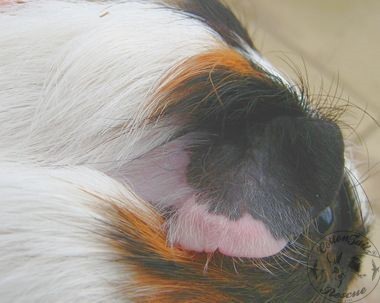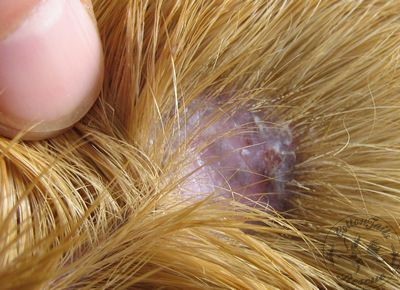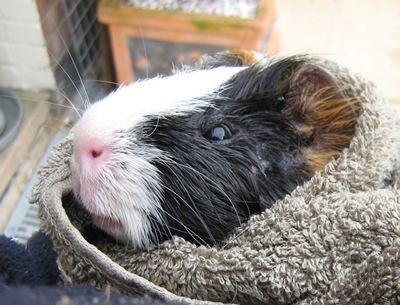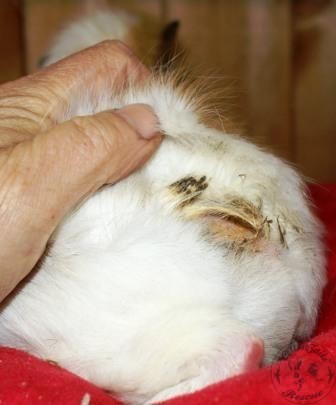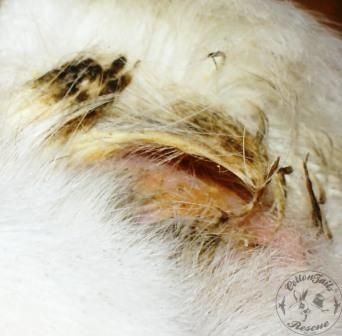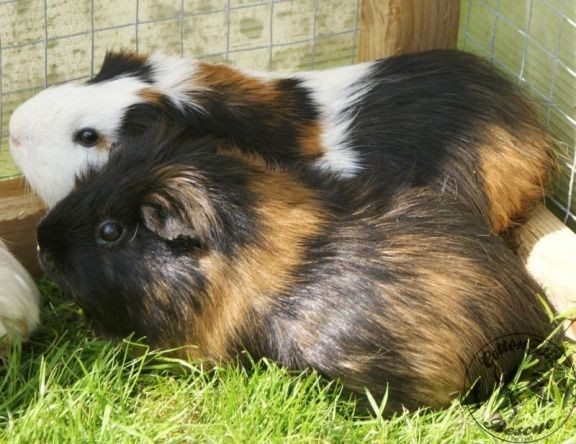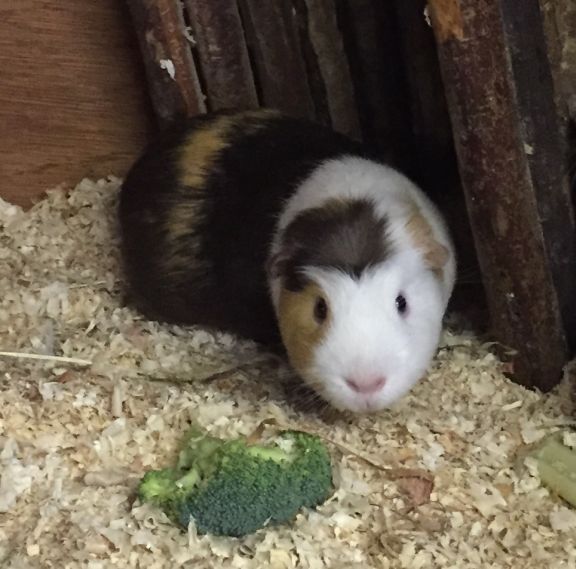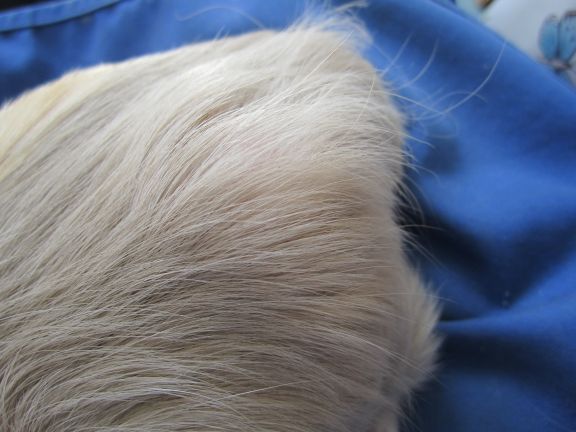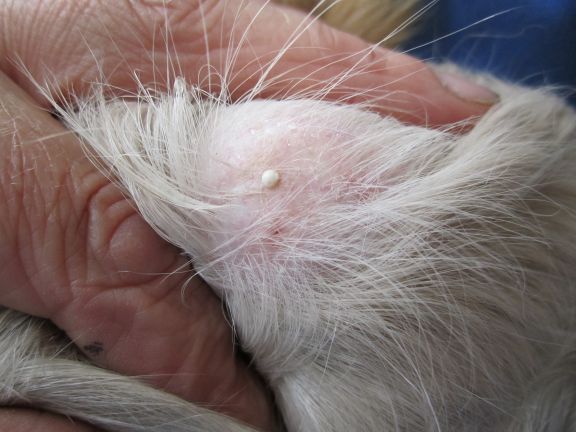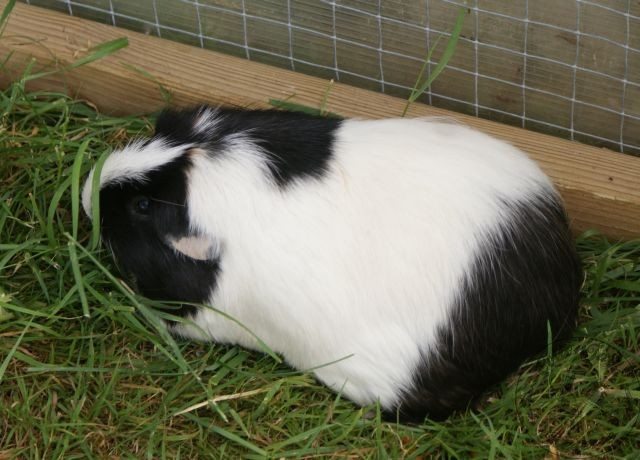Unlike most rabbits, guinea pigs usually make excellent pets for families with children, as they are quite easy to handle, rarely bite, and relatively straightforward to look after. I made the film below to show potential adopters what a great little piggy Gizmo was, and whilst filming, it struck me that he was an excellent advert for guinea pigs in general. Here it is:
Shopping List
- Hutch or inside cage, 4 feet long or larger for one pair of guinea pigs
- Run or safe exercise area with a lid
- Dust-extracted wood shavings
- Good quality hay
- Guinea pig food pellets
- Daily fresh green vegetables
- Non-spill food dish
- Water bottle
- Hooded corner litter trays or houses
- tunnels
Basic Facts
- Life span: 5-9 years
- Maturity: 3-8 weeks (yes, many can breed at three weeks old!)
- Gestation: 59-72 days
- They are happiest in same-sex pairs or groups or a neutered male with a female or females. Males, if not neutered, are best in related pairs or singles—more on that later.
Bedding and cleaning out
Use a deep layer of dust-extracted shavings throughout the cage, with a good layer of hay on top. I also like to line the hutch floor with newspapers before adding the shavings. Hooded corner litter trays are popular with guinea pigs as they can hide in them, but even ordinary cat litter trays can be helpful.
It is best to remove soiled bedding daily and replace it with fresh bedding, thoroughly cleaning out the whole cage twice a week depending on how big the cage is, how many guinea pigs you have, and how often they are outside in their run. You can use a spray disinfectant suitable for small pets, especially in the corners of the cage.
Company and Bonding
Guinea pigs are happiest in the company of other guinea pigs. Two females, two males if they have been brought up together (although occasionally fighting may occur as they get older), or a neutered male and female works well. REMEMBER THAT MALE GUINEA PIGS ARE FERTILE FOR UP TO 6 WEEKS AFTER THEY ARE CASTRATED! If you are going to have your guinea pig castrated, make sure your vet is experienced with the technique in guinea pigs and also request they consider the abdominal method rather than the scrotal method, as this is the safest neutering method to use on male guinea pigs. Females are currently not routinely spayed as they do not recover well from this invasive procedure, although it is safe and routine in rabbit females.
Males can be tricky to bond, especially if they have not grown up with their new friend, and as a result, most adult male-to-adult-male bondings fail to work and often result in serious injury. Sometimes, an adult male will accept a baby male, but fighting can start when the baby matures, and they then have to be separated. Neutering generally will not resolve fighting as it only renders them infertile. If a pair of males have to be split up due to fighting, having them live side by side in adjacent cages and runs can work very well, as they can see, hear and smell each other but can’t cause any harm. The alternative is to have a single male castrated so he can then live with a female, as mentioned above. Some older single males can be happy and content as house pigs, especially if they get lots of attention from their owners. Each guinea pig is different, and this needs to be taken into account, too, as some enjoy company, and others hate it and prefer to do their own thing with minimum interference from their well-meaning owners.
Keeping a rabbit and guinea pig together rarely works long-term and should not be attempted, as serious injury to the guinea pig is the likely outcome. Suppose a group of guinea pigs is to be kept together. In that case, the best combination is all female and possibly one neutered male, who is often very useful as a peacemaker as it unites all the girls together. The film below illustrates very well how a male can be kept successfully side by side with females whilst waiting for his fertility to drop post-castration. Filmed by the new owners of Fudge (now called Finn):
If you are keeping a pair of males, they must have plenty of room to get away from each other if they should want to, and they often like to have a house each rather than share, but still interact together when they want to and will feed side by side even although they also want their own space. Here is a short film that I took to try and increase the chances of the piggies in the film getting a new home, but it also illustrates how well a group of guinea pigs can work:
To see footage of match-ups, see the film clips below:
Millie, the female guinea pig, is matched with another female, Part 1:
Millie the female guinea pig is matched with another female, Part 2:
Neutered male matched with female: Part 1
Part 2:
Part 3:
Here is another short film introducing a neutered male to a female. They had been living side by side for several days before they were introduced.
I asked Lisa, who recently adopted a partially-sighted female guinea pig, Primrose, to write up her experience introducing a new guinea pig into an already established group of one neutered male and three females. This is what she wrote, and I have included it here to show that such introductions can be successful if you are patient and watchful.
I took my three female and one neutered male guinea pigs to CottonTails® to start the match-up process with a 7-year-old partially sighted Primrose. They were all put on the grass and ate happily together, and after 30 minutes or so, I brought them home in the same pet carrier and put them straight on the grass for a couple of hours. They were then moved into the lounge in a very large C and C cage, and I placed another shelter in the cage so they could have one each if necessary. Here is what happened:
On the first day (Saturday), Primrose hid a lot and would come out only for water, but she was bedded on fresh hay, so she had plenty to forage on, and I placed pellets and veg in her shelter because meeting my four is rather daunting! I studied them all Saturday night, and not very much happened.
On Sunday morning, Primrose was still hiding when I fed them, but then the male pig sat with her and groomed around her eyes. My timid female was scared of her, and the dominant female and bossy female were shooing her away, which was a worry for me because she was running away wheeking. This continued into Monday, with the male being friendly and two of the females being intimidating! There was also some chasing, so I put some Vick Vapour rub on her bottom to stop this behaviour, and that seemed to work well.
By Tuesday, she came out more and more, but the bossy girls continued to shoo her away.
At this stage, she was eating, but only when I placed the food by her, she wasn’t part of the gang yet. This behaviour continued on Wednesday, but I saw more of her coming out to the front of the cage and the two bossy girls being kinder.
Today, Thursday, day 6, I can now say the match-up has worked; this morning, she ate with the herd and is swiping food from them. Another thing I find rather strange is that everyone wants to sleep with her. She has spent today sandwiched between 2 other pigs, and the two bossy girls are being a lot kinder to her. The male pig adores her and spends quite a lot of time with her. I have spent five days texting Mairwen with my worries, and she was very reassuring. All the behaviours sounded very normal.
Although guinea pigs are best in the company of other guinea pigs, there can be some very touching examples of how some other species can accept them too. Still, care must be taken at all times if you allow guinea pigs to meet other pets, such as dogs and cats, as it would only take a second for a serious accident to happen. The photo below illustrates how occasionally an unusual bonding can take place.
Feeding
Guinea pigs cannot make their own vitamin C, so their diet needs to be rich in this vitamin. Grass during the spring, summer and autumn months provides lots of vitamin C. Still, in addition to this, they will enjoy spring greens, beetroot, celery, cauliflower leaves, banana skins, cucumber, broccoli and many other vegetable options. This is in addition to dried food (feed approximately one egg cup per guinea pig) and fresh hay, which should always be available.
Herbs are enjoyed but only give small quantities at a time. Fruit should not be high up on the menu for guinea pigs and should be given as a treat only. Suitable fruit items are strawberries, little bits of apple or pear, grapes, tomatoes, and banana. Some guinea pigs should not be given fruit if they are prone to cheilitis, a condition that makes their lips and skin around their mouth very sore – more information on this condition under the problems section below).
Apple branches are enjoyed too, but make sure they are free from any sprays or pesticides. Refill the water bottle daily, even though most guinea pigs drink very little. Guinea pigs should only be given a small amount of good quality dried food (approximately one flat egg cup per guinea pig per day), and it is best to stick to pellets, not muesli-type brands, as this type encourages selective feeding. Please do not rely on vitamin C in the dried food as your only source of this vital vitamin. The amount left in the food will depend on how long it has been made and the storage facilities (temperature, humidity, etc.).
Handling
Your new guinea pigs will be nervous when you first get them home, so it is important to let them settle in with as little handling as possible. You will find that most guinea pigs try to run away when you put your hand near them; this is an automatic reaction and one that even tame guinea pigs will do. It would be best if you aimed to gradually build up their trust in you by talking to them and gently stroking them in their cage, especially when you have a tasty treat for them. When you feel confident that they have settled in, you can pick them up gently but firmly by placing your hands around their middle. Many guinea pigs learn to enjoy sitting on your knees whilst eating vegetables and treats, but bear in mind that many are very scatty at first as they are afraid and have not been handled very much. The good news is that the majority responds well to careful, regular handling.
If your guinea pig runs away all the time and you find it hard to catch him, try to corner him and gently pick him up. Don’t grab at him, as this will make things worse. Often, guinea pigs will run inside a tunnel or house, and that can make it easier to catch them. This tendency is useful to remember when you are trying to catch your guinea pigs in their run to put them away at night – placing a carrier on the ground in the run with the door open is often the only invitation needed for the piggies to run inside willingly – job done! Sometimes, it takes a few herding sessions for them to learn that this is a good idea, but don’t give up if they don’t go in the first time without persuasion.
Housing and accommodation
Guinea pigs can be housed outside all year round so long as the hutch is weatherproof and has a separate draught-free dark area. It must be at least 6 inches off the ground and should be sited out of direct sunlight and draughts. However, during the cold winter months, bringing their hutch into a shed or similar sheltered area with a window to allow natural light to come in is best. The photo below shows an alternative way of housing guinea pigs inside, taken by the owners of Hannah and Polly, using C & C caging.
Here is another excellent way to keep inside guinea pigs taken by the owners.
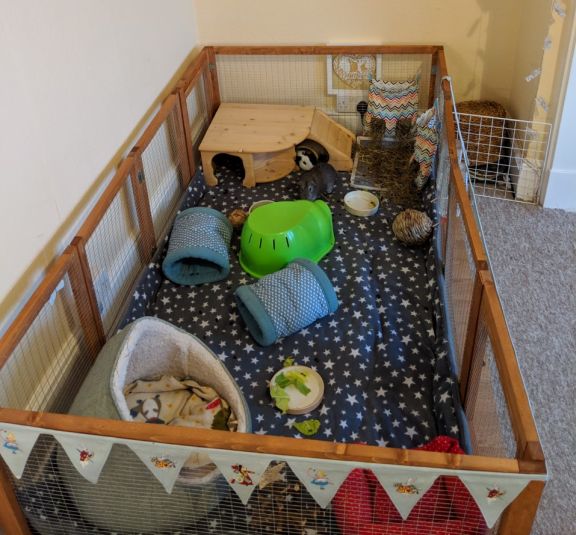
An escape-proof run or exercise area is enjoyed during good weather, and guinea pigs can be out on the grass from Spring right through to Autumn during the day. Ensure the run has a covered-over area so that the guinea pigs can get out of the sun and rain, and ensure the top is firmly secured so other pets cannot get in. A top on the run is very important as it has been known for birds of prey to swoop down and carry off a guinea pig.
Although very popular, two-level hutches are not ideal for guinea pigs or rabbits as the ramps are often steep and narrow, and many guinea pigs do not like to use them. However, if you have bought one of these, you can simply convert the ramp to make it safe and secure, encouraging nervous guinea pigs to use it. The photos below illustrate how it can be done, and the “tube” can be made of cardboard, lino, or similar material, but bear in mind it may get nibbled, so be careful about what you use. Lino was used in the photos successfully, and there was no harm to the guinea pig Coco, who had used the ramp happily for over four years.
The photos below show how even a rabbit round-around system can be adapted to suit guinea pigs!

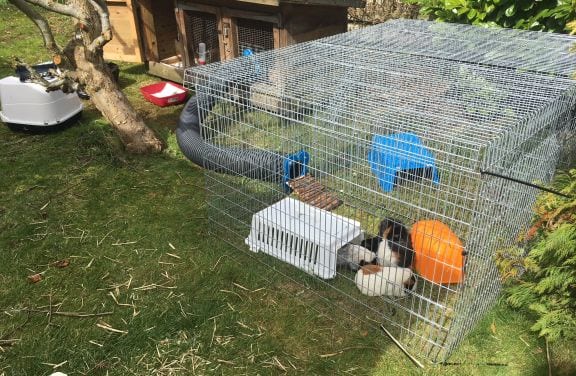
Below is a photo showing a typical run suitable for guinea pigs for use on the grass.
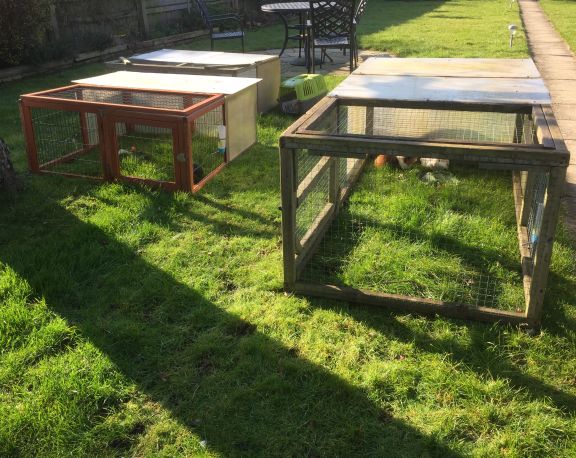
Breeding
There are more than enough people deliberately breeding guinea pigs, so I cannot condone owners wanting to breed from their guinea pigs indiscriminately. However, I have written some important points on this subject to help those owners who may have taken on an already pregnant female or for people who bought what they were advised were a same-sex pair and found that they were not!
If females have not given birth by around ten months of age, their pelvic bones may fuse tightly, which would make it impossible for them to give birth, so a female over that age should not be allowed to breed as a precaution. The photo below shows how large some sows become just before giving birth, sometimes as wide as long!
Guinea pigs can breed from around three weeks old, so any baby males must be correctly identified and taken away from mum and sisters at about three weeks of age unless the litter is large (over four babies) and all the babies are very small or stunted in which case they should stay with mum for a few more days to give them a good start. Once the baby males have been separated from mum, they need to be kept for at least another week or two to ensure they are eating and growing well before being re-homed. Sometimes, a baby male will live happily with his dad, so that option can be tried rather than going straight for the neutering option at three months of age.
When mum is giving birth, she will usually manage on her own, removing the membrane from each baby once it is born and then eating the placenta. Occasionally, she will get so carried away with cleaning up one baby that she fails to notice that another has arrived and does not remove the membrane in time, which can lead to the second baby suffocating. This can be the cause of finding a dead baby the following day, seemingly unharmed and healthy, as mum does get around to eating the membrane, but by then, it can be too late. There is no need to remove other guinea pigs living in the same hutch as mum, so long as they are all getting on well, are females, or a neutered male castrated for at least a calendar month. The average litter size is 3, but anything from a single baby to 6 can be expected. If the single baby is male, he may be ready to breed at two weeks, so you have been warned!
Baby guinea pigs are born full-furred with their eyes open, perfect little copies of adults, and can eat solids within minutes of birth. They do, however, rely on mum’s milk for 3-4 weeks and will feed from her greedily throughout the day, as well as eating vegetables, hay and dried food. Mum has only two teats, so a large litter can significantly drain her condition and health. Ensure she gets plenty of food, water and rest and that other adults in the cage are not depriving her of the chance to feed. With a large litter, you may need to supplement any very small babies with milk substitute (kitten milk or goat milk works best), and this can be offered in a very shallow dish such as a jam jar lid or offered by syringe, but be careful not to feed so much that the babies do not feed from mum, as her milk is far better than any substitute you can give. If all the babies appear to be growing and are healthy, do not interfere; just ensure you provide a good, varied diet to mum and babies.
Correct Sexing
Whilst guinea pigs are easier to sex than rabbits, mistakes can be made, with disastrous results, so you should always get your guinea pigs checked over by an expert if you want to avoid fighting or breeding. Unlike rabbits, guinea pigs show their actual sex at birth, but some males are not so obvious, and some females look like males, so care must be taken if you try to go by photos! The first photo below is of a male, the second photo is of a female, and the third photo is of a female, but if she had not been checked thoroughly, she would have been mistaken for a male. There are lots of sites on the internet that go into the sexing of guinea pigs in great detail, so if you want to do this yourself, then do look at these sites, as they give far more information than I can post here.
Neutering
It is very rare for a vet to attempt neutering a female guinea pig unless it is for urgent medical reasons, as they rarely survive such an operation, usually passing away either during the operation itself or within a few days afterwards. Male guinea pig castration, however, has become almost routine but has been fraught with post-operative complications in the past, such as infection and penile prolapse (paraphimosis), making it an operation that many owners do not want to risk.
The good news is that a new method is now available, proving to be a huge success. This new method involves carrying out the operation via the abdomen rather than the scrotum. As a result, there has been a massive improvement in the health of the guinea pigs, with no sign of infection or other complications. My thanks go to Damian Pacini, head vet at Bristol Arc Vet Clinic, for finding out about this new technique and being willing to try it out. This is the method we will now follow in future. For those of you who are interested in the scientific basis for such results, here is the link:
https://www.ncbi.nlm.nih.gov/pmc/articles/PMC4581678/
Comparative study of 2 surgical techniques for castration of guinea pigs (Cavia porcellus) Guilmette, J. ; Langlois, I. ; Hélie, P. ; El Warrak, A.O. Canadian Journal of Veterinary Research, October 2015, Vol.79(4), pp.323-328
Common Problems and Health Issues
Matted fur
This is common in long-haired guinea pigs if they are not cared for properly. In most cases, it is best to keep the fur cut short (especially around the rump area), and this only takes a few minutes to do every 3-4 weeks. Make sure you are aware of where the legs and ears are, as well as the sensitive area around the rump. Only in cases where you plan to show the guinea pig should you consider grooming with brush and comb, as most guinea pigs hate being brushed, which is also very time-consuming. The photos below show a guinea pig not groomed for about six months. The fur is unsightly and heavy, smelly, and a target for flies, resulting in maggots eating the guinea pig alive underneath the matting. Skin fungal infections are also common in badly matted guinea pigs.
Obesity
Overweight guinea pigs usually develop this condition because they are fed too much dried food, vegetables and fruits that are too high in sugar, or sometimes both. Sweet treats also add to the problem. An overweight guinea pig is not a healthy guinea pig and will give the same health risks as it would to any other animal, including humans. Guinea pigs should be fed one eggcup (flat, not heaped) of pellets per guinea pig once a day, with green vegetables, grass, and lots of meadow hay.
Vegetables that are not green should be avoided as they are generally higher in sugar, and fruit should also be avoided. Pet shop treats are usually packed with sugar and should also be avoided, although some healthier versions, such as hay-based treats, are starting to appear on the market. Below is a photo of a very overweight guinea pig who was fed all the wrong things and stole most of her partner’s quota, too!
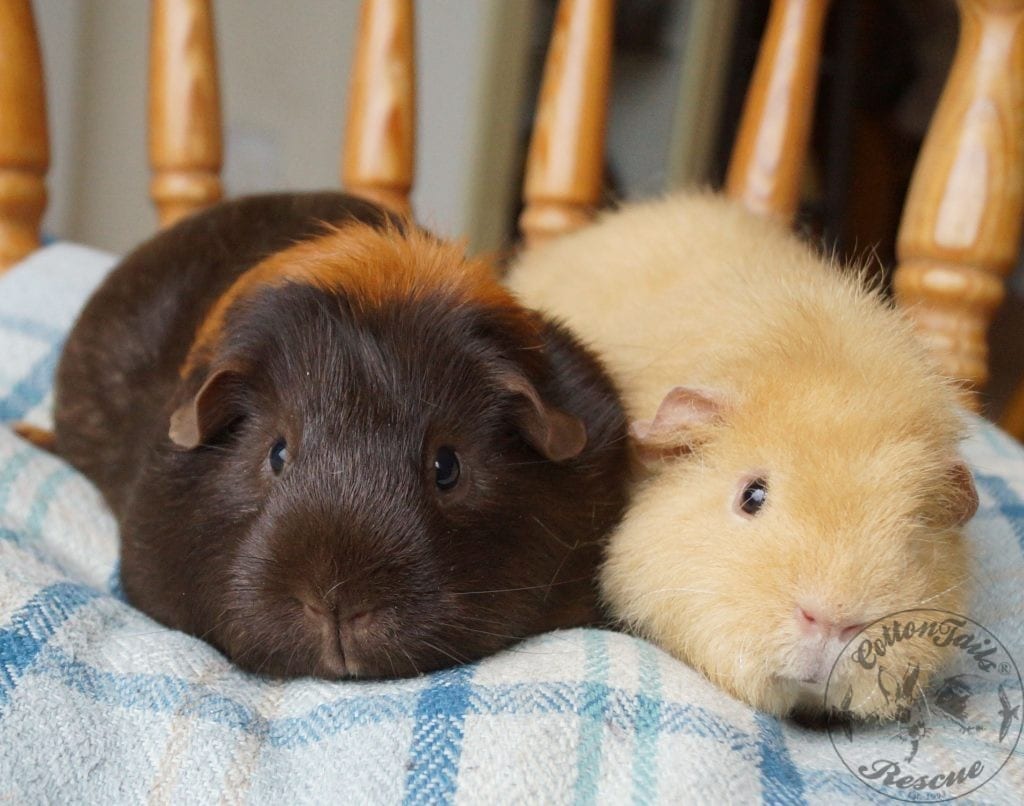
Diarrhoea
This is rare in guinea pigs but potentially fatal; contact your local vet immediately. A gastric infection usually causes it but can also occur after the guinea pig has eaten something inappropriate or has gorged on fruit.
Overgrown Claws
Guinea pigs’ claws grow at different rates, so some individuals need their claws trimmed every few weeks, whereas others hardly ever need trimming. It also depends on whether their run is on a patio or grass. If the claws are white, it is easy to see the “live” part of the claw as it will be pink, so you cut just above the pink area using pet claw clippers. If the claws are dark, it is very difficult to see the “live” part, and you either can shine a torch through the claw from underneath so the pink area then becomes visible or look for a change in the shape of the claw, which can indicate the dead area.
If unsure, do not attempt this; ask a professional to do it for you. Four claws are on each front foot and three on each back foot. Some guinea pigs get an overgrowth of the “horn” of tissue on the inside of the front feet, and this can grow long and wind round into the skin. This can be snipped off easily, but leave a gap of several mm away from the skin to ensure you are cutting the dead part; otherwise, severe infection will get into the foot with sometimes fatal consequences.
Extra toe on hind or front feet
This occasionally occurs, and as the extra toe is often only attached by a thin piece of tissue, it may be best to have it removed by a vet in case it catches on something and then tears off, causing injury, pain, and possible infection.
Scratching and/or bare patches
It is often caused by a mite (Trixacarus caviae) that causes severe skin irritation, causing great distress to an infected guinea pig. It is highly contagious, and if one guinea pig has the symptoms in a group, they will all have it, even if the others do not show the same symptoms. The treatment is usually an injection once a week for four weeks with Ivermectin administered by the vet or a one-off application of Stronghold, also available from the vet. Ivermectin is also available from large pet shops as a spot-on but may be diluted, so it is essential to read the instructions carefully. Mites must be treated seriously as this condition can be so severe that it can kill.
Below is a guinea pig showing the typical signs of mites. Notice the bare patches where he has scratched away his fur.
The photo below shows the same guinea pig three months later after successful treatment with Ivermectin
Impacted or Compacted Rectum
A common problem in some boar (male) guinea pigs is impacted rectum. To properly understand impaction in male guinea pigs, it is important to understand the importance of caecotrophy. Two types of droppings or pellets pass through the guinea pig. The first set are the soft caecal pellets that gather in the perineal sac for consumption or are consumed directly from the rectum (caecotrophy). This process is vital for the guinea pigs health as these pellets contain high levels of vitamins. The other type of dropping is the usual torpedo-shaped one you find abandoned on the floor of the cage, which has been through the guinea pig twice. In a normal male guinea pig without impaction problems, the caecal pellets are trapped on their way out of the rectum in an area called the perineal sac (more prominent in males than females) and the larger, harder faecal pellets are pushed out and expelled. In males with impaction issues, both types are trapped inside the perineal sac as the muscles of these guinea pigs have weakened, and they can no longer expel the hard pellets. This causes impaction of both types inside the sac, and the guinea pig is unable to clear this by himself. Droppings of both types then build up in the sac and form a ball.
Depending on the extent of the problem, you will have to gently squeeze out this area every day, two or three times a week, or whatever is needed. Massage oil, aloe vera gel or Vaseline on a finger (or cotton bud if you don’t fancy that!) can be used and very carefully coat the inside of the dilated area after emptying it. This makes it easier to empty next time. You don’t need the oil daily, just now and again, to keep it lubricated. There is no cure for this condition, but as long as the ball is removed regularly, it does not seem to bother the pig, and they get used to the procedure. If this procedure is carried out regularly, the problem often resolves itself with only an occasional emptying procedure required after that. Overweight male guinea pigs may be more prone to this condition as they cannot consume their caecal pellets properly. Thus, they start to build up in the perineal sac, possibly weakening the muscle tone at the same time, but no one knows for sure if this is the case. It makes sense not to allow your male guinea pig to become overweight as a precaution anyway. The photos below are of a male with a compacted rectum, before (first two photos) and after emptying (third photo); note that the last (5th) photo is of a “normal” male, and you can see the difference in muscle tension in this guinea pig compared to the photo directly above (4th photo) which shows the lack of muscle tone.
Scabs around the mouth and/or nose (cheilitis)
Some guinea pigs develop a distressing condition where sore scabs form around the mouth and nose, starting in the corners of the mouth and spreading outwards. The condition can also spread to their bottom as well in severe cases. It would appear to be fungal in origin. You may find the following link useful:www.guinealynx.info/cheilitis.html This condition needs urgent attention, and the guinea pig should either be taken to the vet (the vet may prescribe
Nystatin cream, which is known to be effective) or you could try treatment at home initially if you have the time and knowledge to do so. The scabs need to be very gently soaked off (this must be done with extreme care and lots of patience as it is excruciating), and a tincture of iodine (such as Betadine, from the chemist) applied sparingly and gently with cotton wool to the affected areas. Daktarin oral gel available from the chemist is also very effective but must be used for at least 2-3 weeks. It is most effective if the scabs are removed first.
Blistex Relief Cream (again available from your local chemist) can also be effective, giving real relief as it has some local anaesthetic effects which soothe the raw areas. This should be done twice daily for at least 2-3 weeks, even after you are confident that the area has healed. In stubborn cases, I also use a product called Surolan (available from vets), which I use sparingly once a day instead of the Blistex for three or four days and then swap to the Blistex.
Surolan contains a mild steroid, which is why it can only be used for a short time, as after that, it can delay the healing process, but I have found that it helps get rid of the condition permanently, so if you are dealing with a persistent and reoccurring problem it is worth a try. Imaverol, available online or from farm supply shops, is also effective, and the scabs do not need to be removed first. It is used at 1:50 dilution. Feeding very acidic foods such as grapefruit, apples, tomatoes, and beetroot can predispose some guinea pigs to this condition, so it is wise to avoid such foods if your guinea pig has this problem.
The photo below shows a guinea pig with scabs all around his nose.
Swollen foot
This condition is called Bumble Foot and is very serious, painful, and challenging to cure. It is caused by bacteria entering the foot via a wound, pulled claw, or other injury and setting up an infection that will rapidly spread if not treated. Even after antibiotic treatment, the paw may not return to its original size. Treatment by a vet is required urgently. Secondary fungal infections can also cause additional problems, and if not treated, the guinea pig will become very ill and probably die.
Bald patches behind the ears
It is normal for guinea pigs to have small bald patches behind the ears. Below is a photo of a healthy guinea pig.
You should only worry if the skin is red and inflamed, crusty with scabs, or looking sore in any other way. See the photos below.
This is likely a fungal infection (also see the section about mites above) and needs urgent treatment as the condition is very itchy and causes deep distress to affected guinea pigs. As ringworm is also a fungal infection, you must take suitable precautions to ensure it is not passed to any other animals or humans, including yourself! Ringworm can only be confirmed by your vet, but it is essential to take precautions just in case. This means washing your hands whenever you handle the guinea pig and completely isolating him from others.
However, it is very likely that all the guinea pigs kept in the same cage will also be infected but won’t necessarily show symptoms. In this case, all the guinea pigs in the cage must also be treated. Veterinary assistance should be sought in most cases. Still, if you are experienced with guinea pigs and confident handling them, it can be treated by using an antifungal shampoo and anti-fungal cream, which can be obtained from your local chemist. The affected guinea pigs need to be shampooed every four days for 2-3 weeks (leave the shampoo on for 5 minutes before rinsing off, keeping the guinea pig wrapped in a warm towel whilst waiting), and the cream applied to the affected patches of skin twice daily. The cage would also need to be kept very clean, washing it with dilute bleach to ensure no fungal spores are left.
If you do shampoo your guinea pig, make sure that no water or shampoo gets into the eyes or ears. Rinse thoroughly and dry off well in a warm towel. Use a hairdryer on a low setting to make sure the guinea pig is properly dry before you put him back outside again.
Greasy or smelly patch on the rump in males
Male guinea pigs can often have a very active scent gland on their rumps, just above where their tales would have been. In some cases, the scent gland becomes over-active. It releases such quantities of oil secretions that the fur around the area becomes matted. If not trimmed back, the skin underneath becomes sore and red due to a fungal and/or bacterial infection setting in. Once the fur is cut away and air allowed into the area, this problem often resolves itself, but you may need to wash the area in warm water and shampoo to remove the oily deposits. The photos below illustrate this problem.
If you have two or more males living together, you may find that one of them ends up with what appears to be a small lump of solid white glue stuck to his side or rump from time to time. This is where another male has got a bit amorous and has deposited semen onto the other guinea pig. It sets extremely hard and is challenging to get off, so you may need to carefully snip off the offending dollop (and attached fur) with small bladed scissors. You can try soaking it off, too, but this could take a while!
Dental Issues
Although malocclusion/dental disease in guinea pigs is not that common, when it does occur, it usually has devastating and often fatal consequences. The most familiar form is where the front incisors do not meet adequately and grow out of control. If the teeth are not filed down correctly on a very regular basis by a vet, the guinea pig will starve to death. The back teeth can also cause problems if they overgrow and form a bridge across the tongue, preventing the guinea pig from eating. A vet can trim back the back teeth, but often, there is another reason why the teeth have grown like this, and as a result, the prognosis for survival is not good.
A condition that can occur simultaneously or separately from dental issues is jaw arthritis. As a result of pain in the jaw, the guinea pig does not eat properly, and the teeth overgrow, causing a cycle that can only be resolved by veterinary intervention. In one case I know of personally, the vet administered a long-acting injection of Vore 14 (0.15ml subcutaneous injection), a long-acting corticosteroid. This treatment is highly effective and does not need to be repeated until symptoms start appearing again (loss of weight, inability to eat properly).
Overgrown back teeth can often occur as a result of ill health in general, where the guinea pig is not able or does not want to eat very much, and the teeth start to grow and form a bridge across the tongue, meaning the guinea pig couldn’t eat even if it wanted to. Sadly, even trimming back the teeth to remove the bridge will not cure the guinea pig as the initial illness has not been resolved. Thrush (a fungal infection causing a white creamy deposit in the mouth and throat) can also be a significant issue, and the inside of the mouth and throat should be checked for its presence. If found, an urgent anti-fungal treatment from the vet must be started immediately. Once again, however, the presence of thrush may only indicate ill health in general and may not be the sole cause of the symptoms.
Fighting
Fighting can occur in any guinea pig pairing or group, but some combinations may predispose this behaviour more than others. Generally, the most straightforward pairing is two females. Still, some individual females are very stroppy, and although they may be happy with a female they have grown up with, they may never accept another new female. Such females may accept a neutered male partner if introduced with care. Males can bond for life, but this is generally achieved by purchasing two brothers who have grown up together. However, two non-related baby males may be happy together if the personalities work together well. The main problem with males is if you get two dominant individuals, each trying to be the boss, and neither is willing to back down. Such a pairing will not succeed and usually ends with severe fighting.
Castration will not resolve male/male fighting. For some guinea pigs that are sparring at each other rather than fighting, it may be possible to settle them down. Sometimes, taking them for a run in the car in a carrier and then into a neutral area for a while can help, or changing the accommodation completely to allow more room, and maybe the addition of two or three houses that can be used to hide away in can reduce tensions. On other occasions, giving all guinea pigs concerned a thorough bath can work well, or smearing a tiny amount of Vic Vapour Rub or Olbas Oil onto their rumps (just above where their tail would have been) can work wonders. The film clip below illustrates how a bonded pair of males can still get on each other’s nerves from time to time, but this is normal, and so long as it does not lead to actual serious fighting, it can be ignored.
Barbering (chewing another guinea pig fur)
This behaviour is relatively rare but can be a real problem if it starts. The problem often appears out of the blue, and suddenly, you are aware that one guinea pig is systematically eating the fur of their companions, effectively giving them a short back and sides! Some guinea pigs on the receiving end will not stand for this and will chase the barberer away, but others seem to tolerate it, although something needs to be done if the fur chewing starts to get down to the skin. There is no fixed cure, as far as I am aware.
Still, the following could be tried: have both individuals (or all if there are more than 2) thoroughly checked over by a vet to rule out mites and ringworm; smear a tiny amount of Vic vapour rub or Olbas oil or similar onto the rump of the one that is being chewed every few days; hang up some salt/mineral blocks around the cage in positions where the piggies usually sit; provide a new source of hay, and make sure it is of really good quality; add in some apple branches and make sure there is always some available in the cage with bark on; provide some new tunnels, wicker balls and other objects that will provide some stimulation and entertainment.
Foreign bodies stuck in the foreskin of males
Male/male pairs can work very well, and they are often strongly bonded, but this does not stop occasionally mounting occurring. This in itself is not a problem, but sometimes the guinea pig doing the mounting may get some foreign bodies stuck in the foreskin around the penis, which then get drawn into the folds when the guinea pig dismounts. Items such as hay, fur, bits of shavings and food can all get stuck, and this will cause a great deal of irritation if not removed quickly. Males often sort these things out themselves, but it is worth checking males at least every other day to ensure all is well in the nether regions department! You will see bits of hay and other bits sticking out from around the foreskin if there is a problem.
If you need to assist a guinea pig in this situation, hold him gently upside down on your knee and gently unravel his foreskin a bit to expose the bits of bedding that are stuck a bit more so you can gently remove them. You may wish to use tweezers. Once all the bits have been removed, gently wipe the area with cooled boiled salty water to ensure it is clean, and check for any tears or other injuries. If all is well, gently let the foreskin come back into place, and all should be well. If there are any signs of infection or sores, vet treatment may be needed.
Change in behaviour, biting
Any sudden change in a guinea pig’s behaviour towards other guinea pigs or its owner should be investigated thoroughly to find out the reason. One problem that can occasionally start suddenly is biting. It is very rare for a guinea pig to start biting or to change in behaviour towards other guinea pigs or owner, and the first thing to rule out is mites. Mites are extremely common and can make guinea pigs very cross as their skin becomes tender and sore, and they often bite when handled. If this is suspected, then a course of Ivermectin or similar effective mite treatment should be completed for all the guinea pigs living together, as all will be affected even if the others show no symptoms.
Secondly, another possible reason for biting is pain, which could be caused by being dropped, some other minor accident, or possibly even arthritis if the guinea pig is over four years old. Thirdly, check for a discharge from the back end of any of the guinea pigs involved. If female, this may indicate that one of them has a uterine infection or is in breeding condition which can upset other pigs but can also upset the pig that is feeling “fruity” so much so that she would become moody. Discharge from a male may indicate some foreign body stuck in the foreskin around the penis, causing an infection – see specific section above for details. Fourthly, there may be some kind of behavioural issue, such as a change in the hierarchy of the guinea pig group for some reason. The onset of breeding maturity could cause a change in the dynamics, the addition of new guinea pigs to the group, or a bereavement.
Abscesses and lumps
Guinea pigs can be prone to lumps and bumps, ranging from non-invasive cysts to abscesses and cancerous tumours. Cysts and tumours are not necessarily a significant problem so long as they don’t cause pressure on a vital organ or are in a place that causes distress or pain or in a position that catches on things or is chewed by the guinea pig. Abscesses, however, do need attention straight away. Abscesses are filled with white pus and occur either as the result of a bite or injury or sometimes occur on their own. It is not always easy to tell the difference between an abscess, cyst or tumour, so if in doubt, you should take your guinea pig to a vet knowledgeable in guinea pig issues. The photos below show a guinea pig with a large abscess on his rump, the first photo illustrating how difficult it can be to spot the problem, especially in a longer-haired piggy, the second photo showing the abscess (with pus starting to ooze out at the centre) as revealed by parting the fur.
This abscess was lanced and flushed through daily with dilute hydrogen peroxide (3%) for ten days, together with antibiotic injections, and he fully recovered. Still, in some instances, an operation is needed to remove the lining of the abscess (the capsule) to ensure it does not return.
Soft incisor teeth or teeth that keep snapping
This rare problem occurs in a tiny percentage of guinea pigs. The owner may become aware that the front teeth either appear soft or keep snapping off, resulting in the guinea pig being unable to eat correctly. This condition should not be confused with dental disease or malocclusion, where the teeth are strong but misaligned, causing them to overgrow inappropriately and either cut into the tongue or cheek or grow out of position at the front.
It would appear that soft teeth in guinea pigs may be linked to low magnesium. Guinea pigs have a higher requirement for magnesium than many animals. Still, as there are wide variations in the nutritional requirements, one individual may suffer from a lack of magnesium, although the diet is entirely adequate for the average piggy. When guinea pigs are fed a diet deficient in magnesium, they grow slowly, and if they survive for a few months, they develop deposits of calcium phosphate in such organs as the kidneys, muscles, liver, stomach, and heart. At the same time, teeth fail to calcify normally, the incisors frequently becoming discoloured, eroded, and finally breaking off at the gum line.
A high calcium level in the diet increases the magnesium requirement of guinea pigs, and significantly, a high phosphorus level in the diet aggravates the symptoms of a magnesium deficiency to as great, if not greater, extent than calcium. This information was found from the following link: www.mgwater.com/rod10.shtml Taking all this into account, the diet of a guinea pig must be balanced and appropriate, using a top-of-the-range dried pellet food together with plenty of fresh hay daily and a variety of fresh green vegetables. Grazing on the grass in better weather in a safe run is also very important to keep your guinea pig healthy and happy.
Bloat
Bloat in guinea pigs is not that common, but it can happen. Typical symptoms are when the guinea pig appears to be pumped up with air and has a swollen abdomen, often sitting in a corner and looking very uncomfortable. Thankfully, many guinea pigs manage to pass the air gradually after a few days, but it is excruciating and distressing for them and can sometimes be fatal. To prevent this from happening repeatedly for individuals prone to this condition, the dried food must be withdrawn completely, and the guinea pig must be fed just on hay, fresh green vegetables and herbage that it will tolerate, and fresh grass. This may mean separating the affected piggy for a little while daily if it is part of a pair or group whilst the others eat the dried food. The following was written by an owner who had a guinea pig very prone to bloat:
Hi Mairwen,
Guinea pigs normally have a bit of a paunch, but with Toffee, I noticed hers was more “bulbous”, like a balloon. When gently prodding, I could feel it wasn’t solid, and I could hear a hollowness when gently tapping her belly. This was most noticeable after she’d had her meals. I started giving her regular gentle massages and warming her belly with my hands, and I could feel a gurgling and popping – just like we do when we have indigestion or when babies are colicky. The tummy rubs were not comfortable for her in the beginning but eventually helped her relax ( and once she had a good fart!). Her poos were regular but smaller than those of the others. As she was adopted very recently, I had no comparison to what she was producing before, but as she has tumours and a heart condition, I didn’t think it too unusual that her digestion is also delicate.
Guinea pigs go very quiet when they’re in pain or discomfort, so you have to be extra vigilant, or you may not notice. Toffee wasn’t in obvious pain – she wasn’t, for instance, pulsating with tension as I have seen a previous piggie with a swollen tummy (who was in her last weeks and needed metacam to keep her comfortable). Still, Toffee did seem more withdrawn after eating and was less active than my other pigs. I stopped giving her apple and broccoli and was otherwise careful with gas-producing foods but to no avail, until your advice to keep her off dry pellets altogether. The difference was almost immediate; her appetite has improved, and she seems happy on vegetables, hay, and grass. She is a lot more active – sometimes even keeping up with Nellie, who is half her age, when running loose. And her belly has a healthy roundness rather than seemingly ready to pop. Her poos are still small, but she’s producing ample supplies, and she’s smiling again. Thank you so much for the good advice. Ellis
General swelling/puffiness around the chin
Although not common, a guinea pig with heart or kidney disease may show the symptoms of general swelling all over, particularly around the chin area, where it is the most obvious. The swelling is as if the animal has been puffed up with air within the tissues but does not appear to be painful, or at least not in the beginning. It differs from bloat (described above) as the skin feels soft and squishy, not hard like a drum. The opinion of a specialist vet is required as this is not a condition that vets come across very often, and this should ensure that the correct diagnosis is achieved.
Sadly, there is not always a cure for this condition, although if the guinea pig is comfortable and has a good quality of life, it may be possible to run them on until this is not the case. Medication may be helpful in some cases, but this may not be a cure but more of an extension of time for quality of life. If some kidney problem causes the condition, you will likely find that the guinea pig drinks a lot and wets a lot, which becomes obvious at cleaning out time as the hutch will be very wet in places where the piggy urinates.

